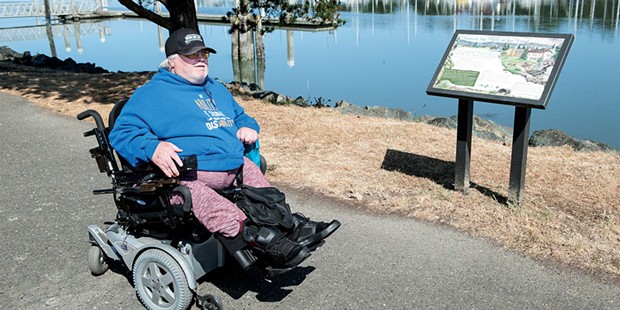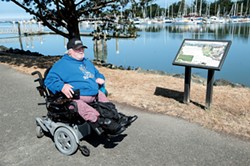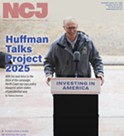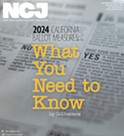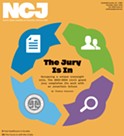Slow Roll
The fight for better access to Humboldt's wild places
By Linda Stansberry [email protected] @lcstansberry[
{
"name": "Top Stories Video Pair",
"insertPoint": "7",
"component": "17087298",
"parentWrapperClass": "fdn-ads-inline-content-block",
"requiredCountToDisplay": "1"
}
]
We aren't beloved for our nightlife, our restaurant scene or weather. No, when asked what the best thing is about our corner of the world, most people have the same answer: the outdoors. We love our redwood forests, rivers and beaches. But sometimes we get so enraptured with the view we fail to see what's missing: access for our friends, neighbors and tourists who have disabilities.
Humboldt County has 110 miles of coastline and 680,000 acres of parks and forests. Of this vast blessing, there are only about 13 miles of trails in our state parks that meet Americans with Disabilities Act guidelines, even less in our national parks, about 20 miles of usable trails in Arcata, Eureka and McKinleyville combined, and two beaches with access. That is, as far as we can tell. Our research revealed that while some websites have incomplete lists of ADA-accessible trails and campgrounds, a comprehensive guide to what's actually available is difficult to find, although one might be in the works.
Tri-County Independent Living, a local nonprofit that helps individuals with disabilities access services, housing and peer support, is currently compiling a list of outdoor recreation sites accessible to people with mobility issues. The going is slow, mostly because some areas are mislabeled as ADA-accessible. Mary Bullwinkel, Tri-County's outreach and resource development coordinator, says she's reluctant to add anything to the guide that she hasn't personally verified.
"Sometimes the claim is that they are accessible, but they technically don't meet the accessibility guidelines," she says, adding that she will be visiting some trails and campgrounds in the upcoming months to inspect and take pictures. "I think it's extremely important that there be equal access for everyone to get into nature, go camping and picnicking. All of those opportunities should be available to anyone."
Charlie Bean, who will be traveling with Bullwinkel this summer, agrees. Bean has white hair and a soft, persuasive voice. A motorcycle accident in 1975 injured his spinal cord and ended his career with the Army. He wakes up depressed in the morning but says he shakes it off by remembering how much work there is left to do. Over the last 40 years he developed a career in finance and as a consultant with the United State Forest Service. Then, after retiring, he joined a staggering number of advocacy groups and committees devoted to helping the disabled. He lived in China for six years and married a Chinese woman who was also in a wheelchair. They adopted a baby daughter and battled with the U.S. Embassy to bring her back to California.
Bean carries a picture of his daughter, Bien Hou, with him in a pouch between his feet. She has thick, dark eyebrows and a mischievous smile. When she was younger, Bean used to fret over the state of Eureka's playgrounds, which were covered in woodchips, impossible for him to roll across. He worried how he would help her if she fell. She told him not to worry, that she wouldn't get hurt. She's 12 now. He still worries. He and his wife are divorced. Life goes on. Bean keeps rolling. On the back of his motorized transport there is a bumper sticker asking, "Does this wheelchair make my butt look big?"
When he was younger, and still using a manual wheelchair, Bean would push himself over the Samoa Bridge and along State Route 255 to visit the bars in Arcata.
"The trip back sobered you right up," he says. Now his chair has a motor and Bean, 59, doesn't get around as much as he once did. But he still serves on several committees, advises the Humboldt County Association of Governments and is executive director for the California In-Home Supportive Services Consumer Alliance. The Board of Supervisors is familiar with the sight of Bean making his way to the podium. He speaks often with Tom Mattson, the county's Public Works director, and with Dan Fulks, director of Human Resources. His soft voice is a familiar one to them on the phone, gently pointing out what many of us don't see, the things that are missing.
Thanks to the advocacy of Bean and others, the Humboldt Transit Authority will be lowering the timetables on bus stops so they can be read by people in wheelchairs. Bus drivers will make louder announcements for the benefit of the sight and hearing impaired. Things aren't perfect — the county still hasn't brought all of its buildings into compliance with the Americans with Disabilities Act per an agreement in 2008, with budget shortfalls being blamed for the delay. But Bean says government entities are much more responsive now than they were when he began this journey in the 1980s, back when few business owners or service providers wanted to be responsible for the costs of accommodating the disabled.
"For me, I personally think that Humboldt County has come a long way," Bean says. "They're addressing issues that have been brought up."
And on the nature side of things, Bean gestures to the planned expansion of Eureka's Waterfront Trail, which, when completed, may link the Hikshari' Trail in south Eureka to the Humboldt Bay Trail (still in conceptualization), making it possible for him to once again go to Arcata for a few beers, should his battery hold out. The completed stretches between the Samoa Bridge and the Eureka Boardwalk include docks where people on wheelchairs can roll down to fish during high tide, a sensory garden for the sight-impaired and wide paths that accommodate scooters, wheelchairs and bikes. A public facility built to accommodate people with disabilities increases rather than limits its potential, Bean stresses. Everyone can share the path. He wants the community, not just the government, to create spaces with the needs of the disabled in mind. Businesses, governments and planning departments should ask people with ADA issues what they need, rather than making assumptions.
"People tell me all the time, 'I made this for you,' and I say, 'You did? Why didn't you ask me what I needed?'" he says. "Stop looking at the chair, look at the people."
One of the challenges to finding and creating ADA-accessible wilderness is the relative age of many parks and trails, which were established long before the Americans with Disabilities Act was signed in 1990. Retrofitting these areas can be a challenge, if not an impossibility. Removing redwood trees or roots to widen and smooth a trail is rarely an option, for example. No one would approve of leveling a ridge into a meadow. And, Bean and Bullwinkel say, no one is actually asking for that. All they ask is that the ADA community be considered when something is first built. That's much easier. A good example, Bean says, is the McKay Tract, soon to be known as Redwood Community Forest, on the southeast edge of Eureka. As usual, Bean has put in his two cents.
"I'd like to see community support for one trail developed for all disabled people," he says. "With interpretive tools for the blind and the hearing-impaired, also with room for people in wheelchairs."
Hank Seemann, deputy director of Humboldt County's Environmental Services Department, hears him. Seemann has done a lot of research into how to accommodate Bean and his peers as the McKay tract plan moves forward.
"I did kind of a deep dive into the standards and guidelines of accessible trails," he says. "They require a firm and stable surface, but what does that mean in practice? When there are different slopes, if they exceed a certain threshold they need resting spots. It gets very technical, and there's the question of what's feasible within a landscape."
California State Parks' guidelines for accessibility, one of the resources consulted by Seemann, speak to the fine line between making nature accessible and making it unnatural.
"People come to State Parks primarily to experience nature; consequently the built settings in the parks must be designed to fit into a natural environment without destroying the experience people come to enjoy," the guidelines caution. "For this reason it is not always desirable to create settings that appear too over-built or overdesigned. The challenge for park designers, managers, rangers and maintenance staff is to understand what people of all abilities need to use the park without compromising the qualities of the natural or cultural resource."
Seemann says he reached out for Bean's input and consultation, and the county is ready to try and make the version of a fully-accessible trail, but there's one wrinkle standing in their way.
"It's essentially landlocked," Seemann says, meaning there aren't currently easements to drive through and reach the land. "Our top priority continues to be developing appropriate access points that are compatible with adjacent property, don't create traffic impacts, and meet ADA standards. We're in the process of developing plans for access points at a variety of locations so the public will be able to park and travel to the future trail system."
In other words, you can build a beautiful, multi-use trail, but if wheelchair users can't pull up and offload their gear before setting off, what's the point?
The issue of easements and vehicular access also came up during a recent project in McKinleyville. The Chah-GAH-Cho Trail, whose gentle slopes are now being lined with crushed rock and pounded smooth, wends through a meadow just south of the Mill Creek Cinema. It's a small oasis of natural land, tucked between the theater, an apartment complex and a shopping center. It includes views of the Arcata Bottoms and the ocean, and its main loop is a flat, even surface. A parking lot will be in place soon. It's perfect. But it took 20 years for it to happen.
The main issue, says Leonel Arguello, vice president of the McKinleyville Land Trust, was access, then funding. The land trust purchased the spot in 1994, but little was done with it. Lack of an easement through adjacent land prevented access and development; a lack of funding prolonged its stasis. When Arguello first visited the spot as a consultant in 1996, much of it was still open, but the intervening years saw an invasion of blackberries and non-native species. It was unrecognizable when he returned two decades later. When funding finally came through, thanks to the help of the Redwood Community Action Agency, the land had to be reclaimed. A "con crew" from High Rock Prison camp felled trees. A Hoopa tribal conservation group and the Sheriff's Work Alternative Program helped with vegetation management. Arguello himself visited almost daily to roust homeless people camped in the bushes, asking them to move on.
"This view did not exist," Arguello says, gesturing to the vistas of water and farmland. In addition to the encroachment of berry vines and trees, people had been using the spot as a place to dump household trash. Now that the meadow is a meadow again, a California Conservation Corps crew is cutting grade and laying down the rock, preparing Chah-GAH-Cho for its grand opening later this year. (The trail received its name during a dedication ceremony in 1994. Chah-GAH-Cho is a translation of the Wiyot word for "not far away," possibly because the site was close to a waterfall on Mill Creek.)
A wide spectrum of people, from those in wheelchairs to those using walkers, will be able to use the loop, stopping to rest at a bench that looks out on the highway and beyond that, the ocean. The more adventurous or mobile may be able to go up a small hill into the trees. The trail may soon join up with the local HealthSPORT parking lot, offering gym rats a chance to integrate nature into their regimens. A local Boy Scout Troop will design interpretive signs. Just across the freeway is the Hammond Trail, which stretches from Arcata to Clam Beach and stands as another bright spot for disabled adventurers. Does the land trust foresee a future when Chah-GAH-Cho is no longer an island, but connected to a larger network of trails? Arguello smiles.
"Strategically, the dream is to connect it to the other trails," he says. But that's a long way off. In the meantime, fingers are crossed that the owner of the nearby parcel won't build another apartment complex, obscuring that hard-won view.
On June 26, Redwood National Park will celebrate the National Park Service's centennial with a day of storytelling, tours, pony rides, music and exhibits. Among the speakers will be Michael Muir, great-grandson of famed naturalist John Muir, who has become famous in his own right as the founder of Access Adventure, which provides recreational carriage driving, educational opportunities and equine therapy for people with disabilities. The group will offer carriage rides through the redwoods to wheelchair users and people with mobility issues.
"People who are in a wheelchair or have trouble getting around can tend to get isolated and housebound," says Muir, who has lived with multiple sclerosis since he was 15 years old. "The great outdoors are even more important for people with mobility issues."
Muir says Humboldt County residents "are blessed to live in one of the most beautiful places in the world," and that a small measure of foresight can make a huge difference in making those places accessible to everyone. He recently climbed the highest mountain in Scotland, Ben Nevis, in his wheelchair. He says the trail to the peak was both well-built and well-planned.
"It was done with natural steps and natural gradations. It was very wheelchair-accessible," he says. Keeping the considerations of the ADA community in mind, he says, makes a "better trail for everyone."
Bean agrees. He has yet to take advantage of some of the local options for ADA adventures, such as the specialized wheelchair available to rent at Crescent City's Gold Bluffs Beach, which has wide tires that can navigate sand. Camping and using the beach would require some extra help, and Bean cherishes his independence. But he does plan on going to the centennial celebration and taking a ride on Muir's carriage.
In the meantime, his efforts to keep the unmet needs of the disabled community at the forefront of local discussions have received a small boost, one that might go unnoticed if you don't know where to look for it: There is now a ramp leading to the dais in Supervisors Chambers in the courthouse and a lower microphone, so his voice might be better heard.
Comments (4)
Showing 1-4 of 4
more from the author
-
Lobster Girl Finds the Beat
- Nov 9, 2023
-
Tales from the CryptTok
- Oct 26, 2023
- More »
Latest in News
Readers also liked…
-
Through Mark Larson's Lens
A local photographer's favorite images of 2022 in Humboldt
- Jan 5, 2023
-
'To Celebrate Our Sovereignty'
Yurok Tribe to host gathering honoring 'ultimate river warrior' on the anniversary of the U.S. Supreme Court ruling that changed everything
- Jun 8, 2023
